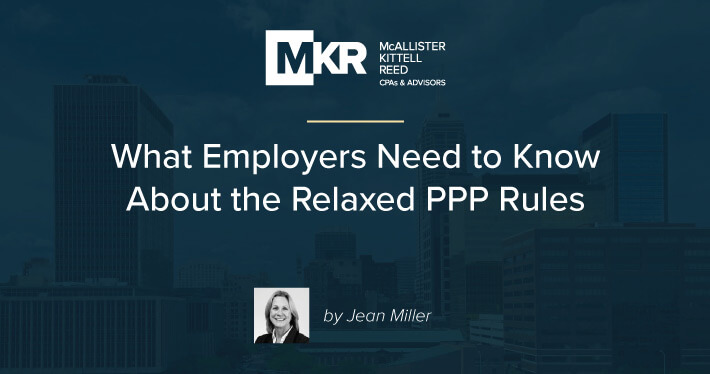Congress passed the Paycheck Protection Program Flexibility Act (PPPFA) on June 5, 2020, amending several provisions in the original PPP loan program. Along with granting business owners more flexibility and time to spend the PPP loan proceeds, the Act permits funds to be used on a wider-ranging variety of expenses while still allowing for loan forgiveness. Here is how this will affect businesses moving forward with a PPP loan.
Extended Covered Period
Originally, borrowers had 8 weeks from the receipt of loan proceeds to spend funds on forgivable expenditures. Now the covered period specifies 24 weeks after the origination of the loan, or December 31, 2020, whichever is sooner. To qualify for forgiveness, however, borrowers must maintain payroll levels for the full 24-week period. Borrowers do have the option to stick with the 8-week deadline, and they must likewise maintain payroll levels through the full 8 weeks to qualify for the full loan forgiveness amount.
Additional extensions include the timeline for eliminating reductions in workforce and wages, as well as restoring workforce levels and wages to pre-pandemic levels required for loan forgiveness (both extended to December 31, 2020).
Changes to Percentage of Payroll Costs
The PPPFA reduced the payroll expense requirement from 75% to 60%, which means that 40% of the PPP loan funds may now be put towards forgivable non-payroll expenses such as mortgage interest, rent, and utilities. Note that the expenses originally designated as forgivable have not changed.
Changes to Repayment Period
For borrowers whose loans are not forgiven, the PPPFA increases the repayment timeline from two years to five years. The 1% interest rate remains the same.
Changes to Rehiring Requirements
The PPPFA also extends the rehire date to December 31, 2020 and allows for a reduced headcount. Rather than basing loan forgiveness on a borrower’s ability to rehire the same number of employees on payroll as was used to calculate the loan, the PPPFA allows for loan forgiveness amount to be determined by documentation showing that the borrower was (1) not able to rehire former employees and unable to hire similarly qualified employees, or (2) not able to return to pre-pandemic levels of business activity in response to federal guidelines related to COVID-19.
Changes to Payroll Tax Deferment
The CARES Act originally prevented borrowers who received PPP loan funding from deferring additional payroll tax once the lender decided to forgive the loan, but the PPPFA eliminates this restriction, and borrowers can now defer the payroll tax for the period from March 27 to December 31, 2020.
Overall, the PPPFA will ease the burdens of businesses that received PPP loans, but it doesn’t fix everything or answer all the questions, so expect more regulations and changes to the PPP program in the near future.


